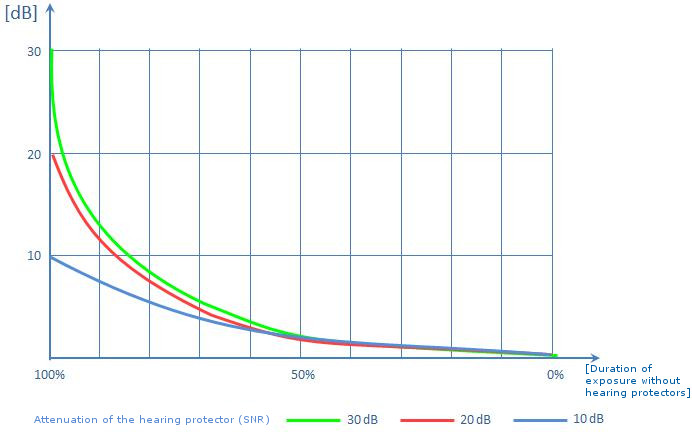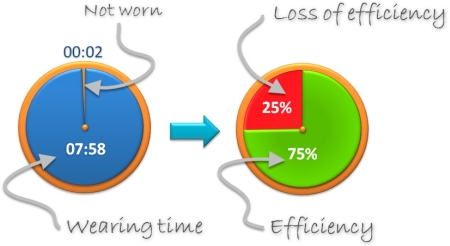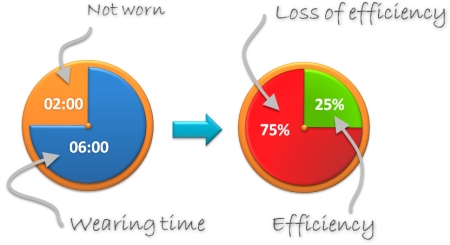The wearing rate is an extremely important factor for the efficiency of personal hearing protectors.
The best HPD is the one that is worn, but to be truly effective, it must be worn continuously during exposure to harmful noise levels.
The right conditions for a wearing rate of 100%:
- An HPD that is comfortable
- A suitable attenuation that is neither too high nor too low
- Employee’s awareness of noise hazards
- Training of the employee for wearing the HPD
A 100% wearing rate is vital to protect the hearing of the employee. Graph 9 shows three hearing protectors with different attenuations.
Effective protection provided by the HPDs based on the decrease in the wearing duration (extracted from the EN458 standard)
As a first observation, when the HPD is not worn even for a short duration, the effectiveness of the HPD is reduced extremely quickly. If the employee wears his HPD for 50% of the duration of exposure to noise, the effectiveness of the HPD would be about 3 dB, which is as good as zero.
Two concrete diagrams illustrate the previous graph and show the importance of wearing an HPD for 100% of the duration of exposure to noise.
Loss of efficiency of the HPD when it is not worn (Example 1)
In this first example, we find that not wearing the HPD for 2 minutes in an 8-hour day reduces the effectiveness of the HPD by 25%.
Loss of efficiency of the HPD when it is not worn (Example 2)
The second example shows an almost total loss of effectiveness of the hearing protector when its use (wearing) is interrupted for only 2 hours in a day.







